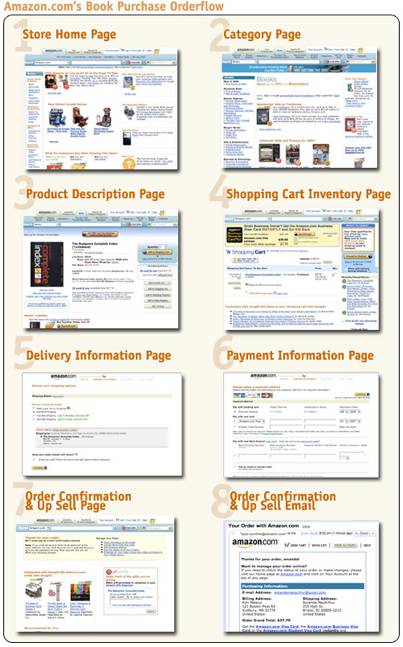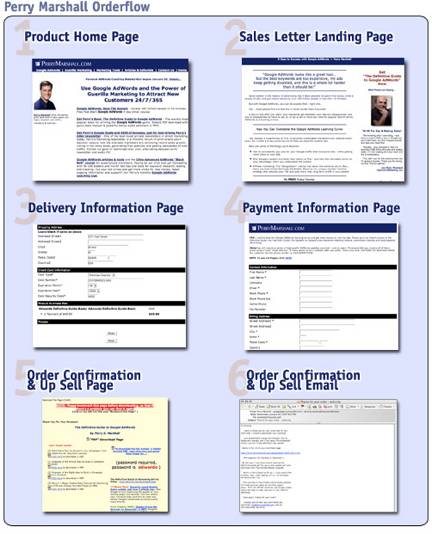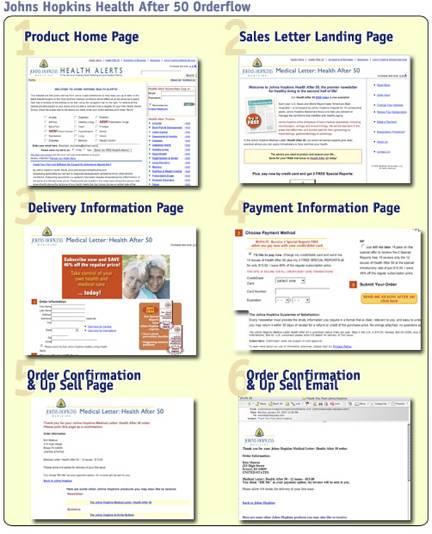Every Retail Media Website has two business goals. First, the website must allow users to buy products. Second, the website must begin a user relationship with both buyers and non-buyers that will lead to future sales.
There are two information architecture strategies that can be used to balance these two goals. Both strategies require two things: a product to sell and free information to give away, usually in the form of periodic email communications (aka: a free email newsletter).
The user has three goals in mind when visiting a Retail Website; find a product that meets their immediate need, discern whether the product meets their need at an acceptable price and purchase the product and ensure its successful delivery. In this chapter, we will discuss the three Retail Sub-Archetypes we’ve identified to date; Retail Catalog Website, Retail Product Website and Retail Subscription Website.
- Retail Catalog Website: Offers many products for sale and uses a shopping cart for checkout.
- Retail Product Website: Offers one non-continuity product for sale and uses a solo order flow for checkout.
- Retail Subscription Website: Offers one continuity product for sale and uses a solo order flow for checkout.
Key Concepts
Business Goals: Every Retail Media Website has two business goals. First, the website must allow users to buy products now. Second, the website must begin a user relationship with both buyers and non-buyers that will lead to future sales.
[text_ad]
There are two information architecture strategies that can be used to balance these two goals. Both strategies require two things: a product to sell and free information to give away, usually in the form of periodic email communications (aka: a free email newsletter).
- Bonus Strategy: As part of the product ordering process, the buyer is offered the free information (email newsletters, product updates, etc…) as part of the order.
- Up Sell Strategy: The free bonus information is offered via a dedicated landing page (aka: Rapid Conversion Landing Page or Name Squeeze Page) or via a Floater Order Form or an order form for the free information imbedded in the Sales Letter Landing Page before the paid product offer.
User Goals: The user has three goals when visiting a Retail Website.
-
- Find a product that meets their immediate need.
- Discern whether the product meets their need at an acceptable price.
- Purchase the product and ensure its successful delivery.
Revenue Model: Retail Media Websites prosper by selling products to website visitors and building lasting relationships that maximize customer lifetime value. Website and landing page conversion rates are the key short-term metric. Revenue and profit per customer per year (customer lifetime value) are the long-term metrics of success.
Content: Retail Media Websites are companion media websites that provide content and functionality that facilitate the sales and purchase of media products that will be used or consumed offline.
The minimum information unit (MIU) for a Retail Catalog Website is provided to the user via a Product Description Page (PDP). For the Retail Product Website and Retail Subscription Website, the MIU is delivered via a Sales Letter Landing Page (SLLP).
Common information products sold via Retail Media Websites include digital downloadable products, physical pre-printed products, digital events (streaming and shippable on CD or DVD) and live events.
Navigation: While the three Retail Media Websites share a common strategic intent, the user experience for each is somewhat unique.
Retail Catalog Websites optimize the selection of multiple products per visit, modeled on the supermarket retail experience. The product and subscription variations are modeled on the direct mail package experience and thus, are designed to optimize the conversion rates for a single information product or subscription.
Conversion rates for single product or subscription websites have consistently proven to be 30 to 50 percent higher than for traffic driven to Product Landing Pages in a Retail Catalog Website and 300 to 600 percent higher when compared to driving the same traffic to a Retail Catalog Website home page.

Retail Catalog Websites use topic based information architecture and keyword search to help users find the product that will meet their needs. Larger catalog sites may require category pages in addition to a home page to cluster product content to facilitate findability. The basic information architecture for a Retail Catalog Website will normally include:
- Store Home Page
- Category Page
- Product Description Page
- Shopping Cart Inventory Page
- Delivery Information Page
- Payment Information Page
- Order Confirmation & Up Sell Page
- Order Confirmation & Up Sell Email

Retail Product Websites most often use a single path to make the sale that includes 6 basic order flow pages:
- Product Home Page (may be shared with other related products)
- Sales Letter Landing Page
- Delivery Information Page
- Payment Information Page
- Order Confirmation & Up Sell Page
- Order Confirmation & Up Sell Email

Retail Subscription Websites also use a single path to make the sale that includes 6 basic order flow pages:
- Product Home Page (may be shared with other related products)
- Sales Letter Landing Page
- Delivery Information Page
- Payment Information Page
- Order Confirmation & Up Sell Page
- Order Confirmation & Up Sell Email
Retail Subscription Websites also require a customer service section for address changes, payments, renewals and other maintenance associated with a continuity information product etc. Many also feature a back issue index and some, such as the New England Journal of Medicine, offer a back issue archive (often for an additional fee).

This article was written by Don Nicholas with the help of Peter A. Schaible. It is only one part of a series on Internet Business Models. See below for the rest of this series:



Excellent reading. Nice piece of info, have a nice day!
Nice post, it gives me some inpirations, thanks.